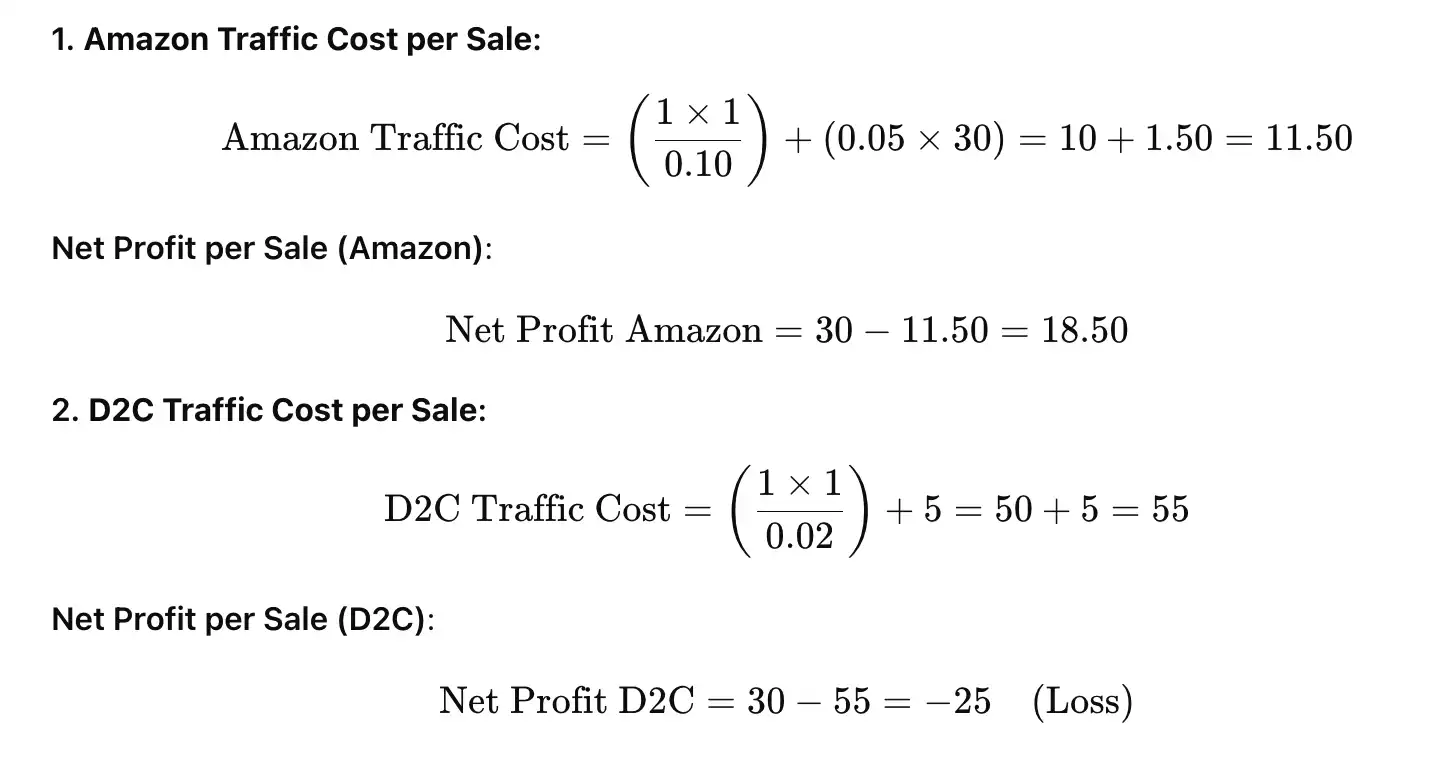Start your Project WITH US
Ready to start your Audit?
As Amazon sellers, we often face the dilemma of deciding where to drive external traffic: to our D2C (Direct-to-Consumer) website or to Amazon’s platform. The common assumption is that driving traffic to our own website offers higher margins, and therefore, better profitability. While this is true on the surface, it overlooks a crucial element of the equation: conversion rates.
Yes, D2C websites typically offer higher margins per sale due to fewer middlemen and lower platform fees. However, the conversion rates on Amazon tend to be higher than on most D2C sites, which significantly impacts the profitability of each sale.
In this article, we’ll break down why relying solely on margins as your guide for traffic decisions may be a mistake and explain how factoring in conversion rates, Amazon’s Brand Referral Bonus, and the overall cost of customer acquisition can lead to smarter, data-driven traffic strategies.
Conversion rates are one of the most critical factors influencing the success of any sales strategy, yet many brands overlook this when focusing purely on margins.
Why are conversion rates higher on Amazon?
For example, a typical conversion rate for Amazon can range between 10% to 15% depending on the product category and listing optimization, while D2C websites can often see conversion rates closer to 1% to 3% on average—especially for new brands that haven’t yet built trust or a solid customer base.
One of the most compelling reasons why sending traffic to Amazon could be more profitable than your D2C site is Amazon’s Brand Referral Bonus.
When you direct external traffic to Amazon from sources like social media, Google Ads, or email campaigns, you qualify for a Brand Referral Bonus. This reduces Amazon’s referral fee from the usual 15% to about 5%—depending on your category.
This is significant. The higher referral fee on Amazon is a deterrent for many sellers, but the Brand Referral Bonus effectively lowers this cost, making Amazon much more competitive compared to D2C sites, where you often have to factor in additional advertising, web hosting, and transaction fees.
It’s tempting to make decisions about where to send traffic based on margins alone—and in many cases, D2C sites look like the obvious choice. However, when you factor in conversion rates, Amazon’s Brand Referral Bonus, and customer acquisition costs, the financial picture looks different.
Let’s break it down:
Even with Amazon’s referral fees, the higher conversion rates and reduced acquisition costs typically make Amazon the better platform for directing external traffic—especially when you’re already receiving the Brand Referral Bonus.
One often overlooked aspect of driving traffic to Amazon is the potential for repeat business. Amazon makes it easier to build customer loyalty with features like Subscribe & Save, and the Amazon ecosystem of recommendations and past purchases encourages customers to buy again from the same seller.
When you have a high repeat purchase rate (for consumables or subscription-based products), you not only increase your sales but also increase organic sales on Amazon. This means that over time, sending traffic to Amazon can lead to more recurring, organic sales—which is something you can’t easily replicate on a D2C website, where customer retention requires constant effort.
The truth is, traffic decisions shouldn’t be based solely on margins. The combination of conversion rates, Amazon’s lower effective fees, and the repeat purchase potential shifts the equation in Amazon’s favor for many sellers.
To help you make better, data-driven decisions about where to send your traffic, I’ve created a simple calculator. This tool will help you compare the true cost of customer acquisition between Amazon and your D2C site, taking into account all of these factors and more.
Let’s say your product costs $30, and you’re considering driving external traffic to Amazon versus your D2C website.

🔗 [Link to the calculator in the comments below]
The debate between Amazon and D2C websites isn’t black and white—it’s about understanding the full financial picture. I’d love to hear your thoughts on this. Where do you prefer to drive your external traffic, and why?
Ruben A.
CEO at PAS